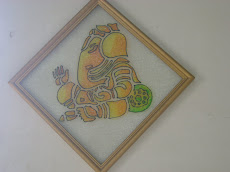Febrile (fever) seizures are terrifying for parents to witness; however they are usually not serious and do not cause brain damage. Approximately 2 to 5 percent of children have one febrile seizure between the ages of 6 months and 5 years old; of those, one-third will have a second seizure, and about one half of those will have a third.
According to the National Institute of Neurological Disorders and Stroke, children rarely develop their first febrile seizure before the age of 6 months or after 3 years of age. The older a child is when the first febrile seizure occurs, the less likely that child is to have another.
The precise cause of febrile seizures is not known; however, they are associated with high fevers (over 102 degrees F) and they appear to be related to the rate of rise in temperature more than the actual temperature of the fever. In other words, a child who rapidly develops a fever of 103 degrees seems to be at greater risk of having a seizure than a child who slowly develops a fever of 104 degrees F. Febrile seizures also tend to run in families, causing doctors to believe they may be genetically related.
Many parents worry that if their child has a febrile seizure, he or she will develop epilepsy later in life. However, according to the National Institute of Neurological Disorders and Stroke, only 2 to 5 percent of children who have febrile seizures go on to develop epilepsy.
Most febrile seizures happen in the first few hours of a child's fever. During a seizure, eyes may roll back in head, body may twitch or jerk, limbs may stiffen, and child may drool and vomit. The seizure may last only a few seconds or up to several minutes. However, if the seizure lasts for more than 10 minutes or if your child starts choking, stops breathing, or turns blue, call doctor immediately.
If your baby is having a seizure, place him/ her on a protected surface, such as the floor, away from any sharp objects. Lay him/ her on his/ her side or stomach to prevent choking if he/she does vomit. As hard as it may be to watch, don't try to hold or restrain your child during the seizure and never place anything in a seizing child's mouth as he could choke on it. After the seizure has subsided he may seem a bit sleepy, but many children return to normal activity immediately.
If your child has a seizure, he should be examined by a doctor to ensure the seizure was caused by the fever and not by another condition (such as meningitis or severe dehydration). You should seek immediate medical attention if he has a stiff neck, is extremely lethargic, or continues to vomit. Doctors will test on your child's blood and urine and may perform a spinal tap to determine the cause of the seizure. A child who has a febrile seizure usually doesn't need to be hospitalized; however, if the seizure is prolonged or is accompanied by a serious infection, or if the source of the infection cannot be determined, the doctor may recommend that the child be hospitalized for observation.
Oral anticonvulsant medications have been proven to reduce the risk of a recurrent febrile seizure when given during illness (Phenobarbital and valproate); however, the side effects of these medications may be significant and many pediatricians are hesitant to prescribe them.
Giving a fever reducer, such as Tylenol or Motrin, at the first sign of a fever is often recommended, but has not been proven to prevent a febrile seizure. The only real way to prevent febrile seizures is to avoid colds and the flu that can cause fever, which is no easy task with young children. Always Prevention is better than Cure.
2008-06-03
Lead poisoning in children
An alert to all the parents!!!!??????? read below to know more
According to the National Safe Kids Coalition, an estimated 1.7 million children, age five and under, have lead levels in their blood high enough to affect their intelligence and development. The most common cause of lead poisoning among children is the ingestion of dust from deteriorating lead-based paint. More than 80 percent of publicly- and privately-owned housing units built before 1980 contain some lead-based paint. To limit your child's exposure to lead in the home:
Always have your child wash his hands before meals, snacks, nap time and bedtime.
Keep your child away from chipping, peeling and flaking paint.
Keep the areas where your child plays as dust-free as possible.
Do not allow your child to chew or suck on painted surfaces such as painted window sills, cribs, playpens, or old painted toys.
Wash pacifiers often and pin them on a short ribbon to your child's shirt.
Keep your child's clothes clean by changing them frequently.
When playing inside, place a clean blanket on the floor or carpet for babies to play on. (Always keep the same side up and wash often.)
Wash toys and stuffed animals regularly.
According to the National Safe Kids Coalition, an estimated 1.7 million children, age five and under, have lead levels in their blood high enough to affect their intelligence and development. The most common cause of lead poisoning among children is the ingestion of dust from deteriorating lead-based paint. More than 80 percent of publicly- and privately-owned housing units built before 1980 contain some lead-based paint. To limit your child's exposure to lead in the home:
Always have your child wash his hands before meals, snacks, nap time and bedtime.
Keep your child away from chipping, peeling and flaking paint.
Keep the areas where your child plays as dust-free as possible.
Do not allow your child to chew or suck on painted surfaces such as painted window sills, cribs, playpens, or old painted toys.
Wash pacifiers often and pin them on a short ribbon to your child's shirt.
Keep your child's clothes clean by changing them frequently.
When playing inside, place a clean blanket on the floor or carpet for babies to play on. (Always keep the same side up and wash often.)
Wash toys and stuffed animals regularly.
Subscribe to:
Comments (Atom)
lord ganesha- glass painting by srividhya

utharakosamangai-shiva temple in south india

glass paintings by srividhya


